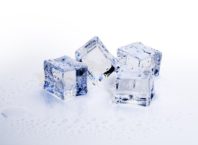Melanoma is a prevalent kind of skin cancer, which develops in the cells or the melanocytes responsible for producing melanin. Melanin is the pigment that gives color to your skin. Melanoma, at times, also grows in your eyes. In some rare cases, melanoma may form inside your throat or nose. What causes melanoma? How can you prevent it? Let us find out.
Causes
When something goes amiss with melanocytes, melanoma might develop. In a normal situation, your skin cells form in an orderly and controlled fashion. So, when the new and healthy cells grow, they push the unhealthy and old cells towards your skin’s surface, where they fall off and die. However, in people with DNA damage, the formation of the new cells may go haywire. As a result, they develop a cancerous cell mass.
There is no clarity on what causes DNA damage in the skin cell. However, it is quite likely that there are many vital factors, such as genetic and environmental factors, that may be responsible for causing melanoma. Lily, an associate who offers finance assignment help, says that it was the tanning lamps and beds that became the primary cause of melanoma in my aunt’s case. In general, the UV rays exposure from the sun becomes the prime cause of melanoma.
However, please bear in mind that UV light does not cause all forms of melanoma. There is also some melanoma, which develops on the body areas not directly exposed to the sun. It indicates that there are other factors, too, which may be responsible for causing melanoma.
Risk factors
Some of the top factors, which aggravate your risk of causing melanoma are:
Fair skin
When your skin has less melanin or pigment, you do not have enough protection from the harsh UV rays. Further, in people with red or blond hair, light-colored eyes, or those who sunburn or freckle easily, the likelihood of developing melanoma is higher than someone with a dark complexion. However, that does not mean that melanoma will never occur in people with a dark complexion. So, even black and Hispanic people are vulnerable to developing melanoma.
History of sunburn
One or more blistering sunburns also aggravate your risk of developing melanoma.
Excessive exposure to harmful UV rays
Exposure to UV rays emitted from the tanning beds and lights and the sun aggravates your risk of developing melanoma.
Residing at a higher elevation or close to the equator
When someone lives at a higher altitude, their exposure to the UV rays is higher. Also, for people who live closer to the equator where the sun’s rays are direct, the exposure to UV rays is higher than those who live farther from the equator.
Having several unusual moles or simply having too many moles on the body.
Rhea, an online finance tutor, shares that she was way too many moles on her body, and that is why doctors have advised her to take full precautions every time she steps out of the home. See, in general, having over 50 usual moles on the body implies that your risk of developing melanoma is higher. Further, in people who have an unusual kind of mole, too, the risk of developing melanoma is high. These moles are known as dysplastic nevi, larger than the regular moles, and may develop in a mix of colors with undefined or irregular borders.
Having a history of melanoma in family
If you have a close relative, your child, parent, or sibling, who suffered (is suffering) from melanoma, then your susceptibility to developing the cancer is higher.
Weak immune system
In people with a weak immune system, the chances of developing any skin cancer, including melanoma, is higher. Usually, the immune system becomes weak when you take medication to suppress your immune system, such as during an organ transplant or if you have a disease, such as AIDS, which may hamper your immune system.
Prevention
Now that you are aware of the risk factors, you need to take active measures to curtail your risk of developing the disease. Some of the prevention measures that you can take are:
Avoid the sun, especially during the day
In North America, the sun’s rays are sharpest between 10 AM to 4 PM. So, it is best to stay indoors and avoid the sun during this time. This precaution should be taken even on cloudy or winter days.
Please bear in mind; you may absorb UV-rays all-round the year. Even though the cloud offers certain protection, they do not entirely prevent damage. Thus, it would help if you controlled your sun exposure when the sun’s rays are the sharpest as that may aggravate your risk of developing melanoma. If the sun exposure gets accumulated over time, your likelihood of developing different kinds of skin cancer is heightened.
Wear sunscreen every time you step out
Jacky, an educator who offers economics homework help, says that since she is at risk of developing skin cancer, she always wears a foundation with SPF and a sunscreen of SPF 30 to keep herself guarded. Well, regardless of the degree of risk, you should always wear a broad-spectrum sunscreen with an SPF 30 or more. Make sure you apply your sunscreen generously. Further, you need to reapply it every few hours, and more if you undertake activities where you sweat or when you get into the water.
Wear clothing that shields your skin
At all times, you need to cover your skin with tightly woven and dark clothes that fully cover your arms and legs. Further, wear a broad-brimmed hat and sunglasses to protect your face. Pick sunglasses, which block both kinds of UV rays that is, UV-A and UV-B. Some companies specifically sell clothing, which offers skin protection. You can seek advice from a dermatologist to find out about the apt brands for your skin.
Stay away from tanning beds and lamps
There are tanning beds and lamps, which emit UV rays and can aggravate your risk of developing melanoma.
Keep a close eye on your skin changes.
A lot of times, melanoma can be diagnosed in the early stages if you are more careful. So, be cautious, and examine any new developments of freckles or moles on your skin. Further, if you notice any changes in the existing birthmarks or moles, that, too, could mean something. Use mirrors to regularly keep a check on your scalp, ears, face, and neck. Further, examine your trunk and the chest, and the underside and top of your hands and arms. Also, keep a check on the back and front of your feet and legs. It includes the spaces between the toes and your soles. Lastly, check the genital area or the area in-between the buttocks.












